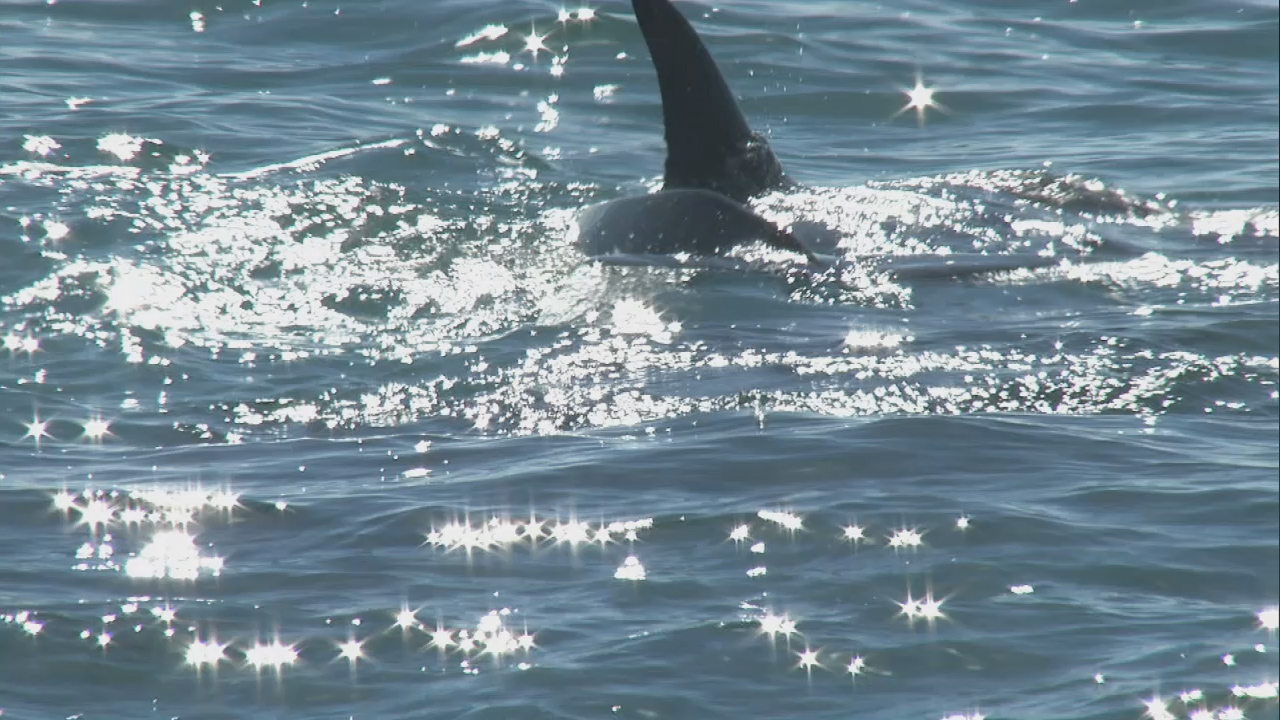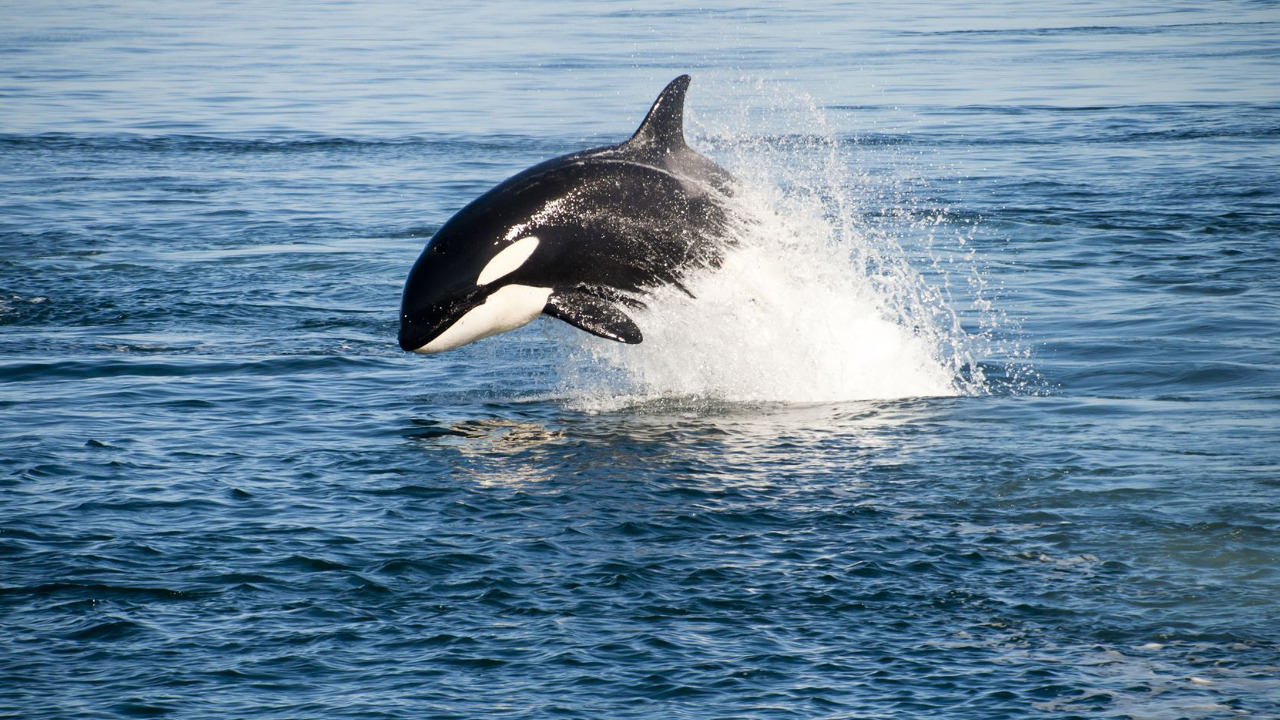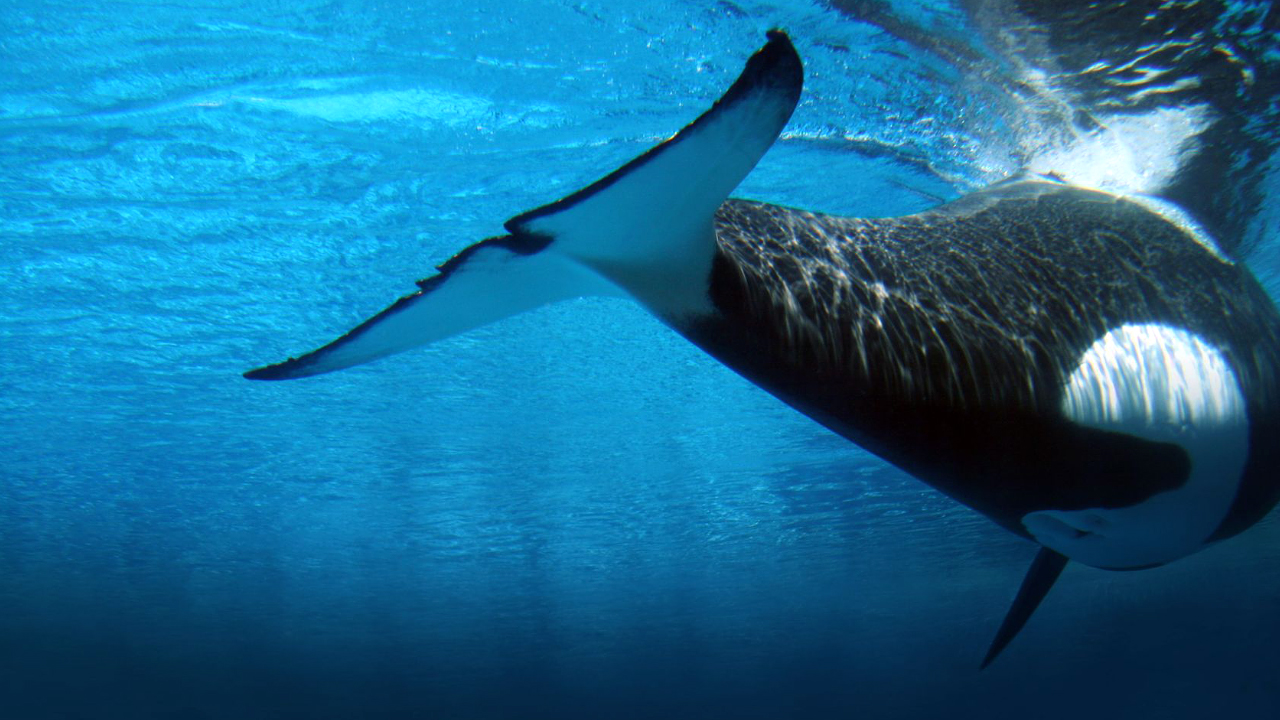Killer whale / Orca
Orcinus orca
-
 Killer whales, or Orcas, belong to the dolphin family and are the largest and often considered the fiercest members of that family, travelling the vast oceans in packs, therefore often named “the wolves of the sea”. Killer whales are highly developed apex predators and one of the most widely distributed mammal species in the world. They have managed to inhabit all the oceans of the world, from the tropical seas throughout the temperate waters and all the way to the edge of the pack ice at both poles.
Killer whales, or Orcas, belong to the dolphin family and are the largest and often considered the fiercest members of that family, travelling the vast oceans in packs, therefore often named “the wolves of the sea”. Killer whales are highly developed apex predators and one of the most widely distributed mammal species in the world. They have managed to inhabit all the oceans of the world, from the tropical seas throughout the temperate waters and all the way to the edge of the pack ice at both poles. -
 Orcas grow to be about 8–10 m long, weighing more than 3,600–5,400 kg. The male orca is larger than the female. Orcas are efficient hunters that eat a very diverse diet of fish, squid, sharks and marine mammals such as whales and seals, in addition to turtles, octopi, and even birds such as penguins and gulls. Animals belonging to certain stocks usually specialise in hunting specific species of prey.
Orcas grow to be about 8–10 m long, weighing more than 3,600–5,400 kg. The male orca is larger than the female. Orcas are efficient hunters that eat a very diverse diet of fish, squid, sharks and marine mammals such as whales and seals, in addition to turtles, octopi, and even birds such as penguins and gulls. Animals belonging to certain stocks usually specialise in hunting specific species of prey. -
 Orcas live in small pods of 6–40 whales. They are very social animals. The bonds between the close-knit members of Orca pods are strong and last for life. The members of a pod hunt together in a very sophisticated manner, attacking even very large prey and then sharing it. The pod members protect the young, the sick and the injured. Orcas are very fast swimmers. They can swim up to 48 km in bursts in order to catch prey.
Orcas live in small pods of 6–40 whales. They are very social animals. The bonds between the close-knit members of Orca pods are strong and last for life. The members of a pod hunt together in a very sophisticated manner, attacking even very large prey and then sharing it. The pod members protect the young, the sick and the injured. Orcas are very fast swimmers. They can swim up to 48 km in bursts in order to catch prey. -
 The secret of this species’ success is most noticeably their cognitive capacities due to its highly social and interactive culture, giving it the potential to develop intelligence for sensing and analysing their three-dimensional environment. Killer whales are capable of teaching one another specialised methods of hunting and also passing on behaviour that can persist for generations.
The secret of this species’ success is most noticeably their cognitive capacities due to its highly social and interactive culture, giving it the potential to develop intelligence for sensing and analysing their three-dimensional environment. Killer whales are capable of teaching one another specialised methods of hunting and also passing on behaviour that can persist for generations. -
 At present, nine different killer whale ecotypes have been described all around the world, meaning that these different types of killer whales have very discrete prey preferences, morphology and behaviour. They do not interbreed and avoid social interaction despite sometimes inhabiting the same waters.
At present, nine different killer whale ecotypes have been described all around the world, meaning that these different types of killer whales have very discrete prey preferences, morphology and behaviour. They do not interbreed and avoid social interaction despite sometimes inhabiting the same waters.
